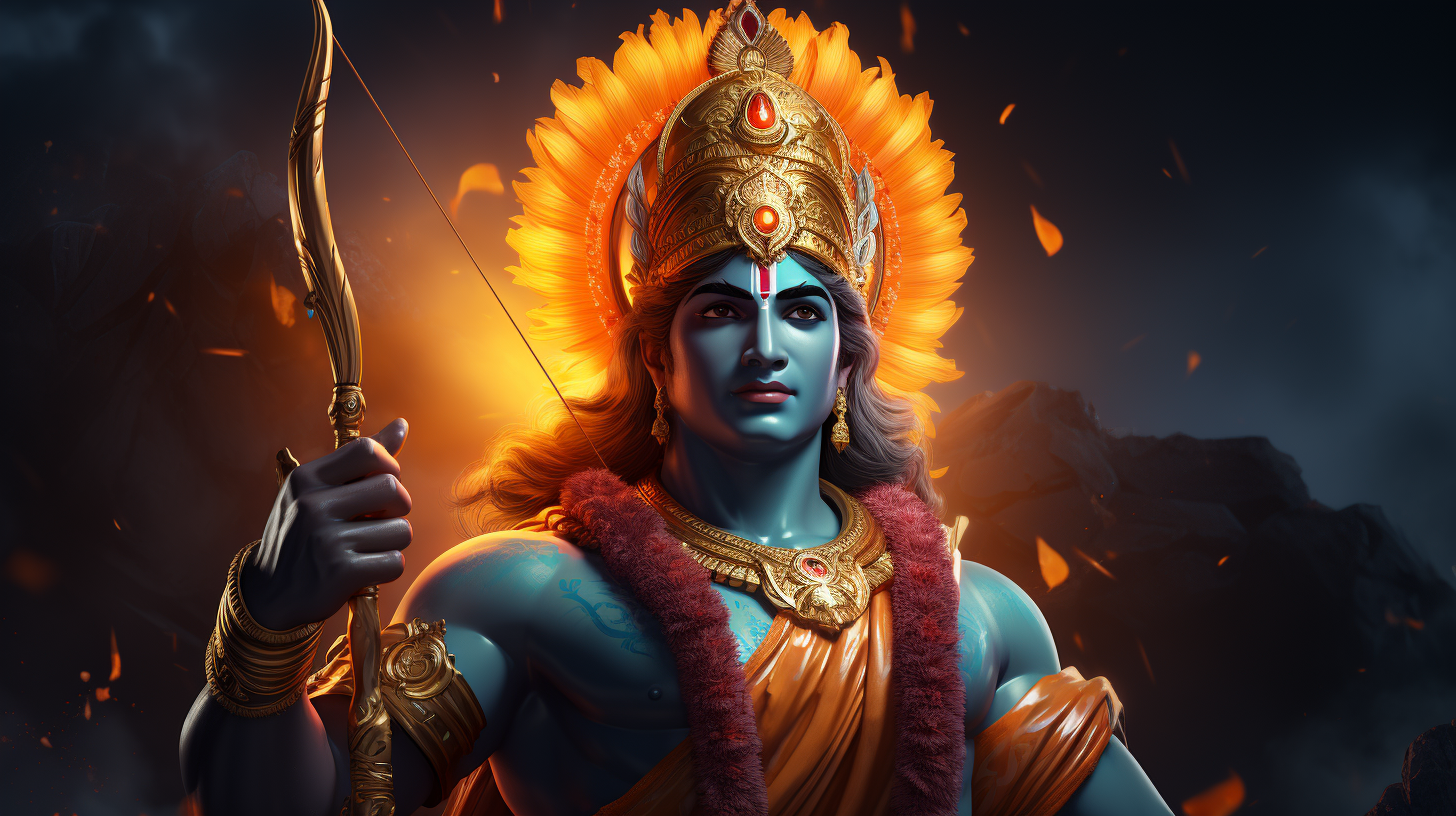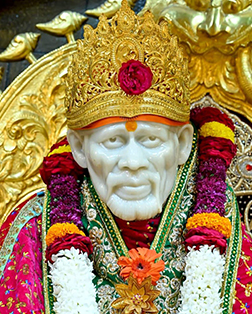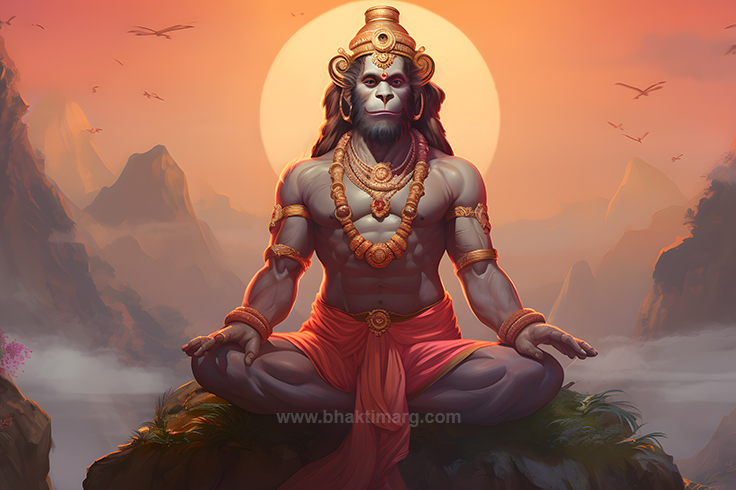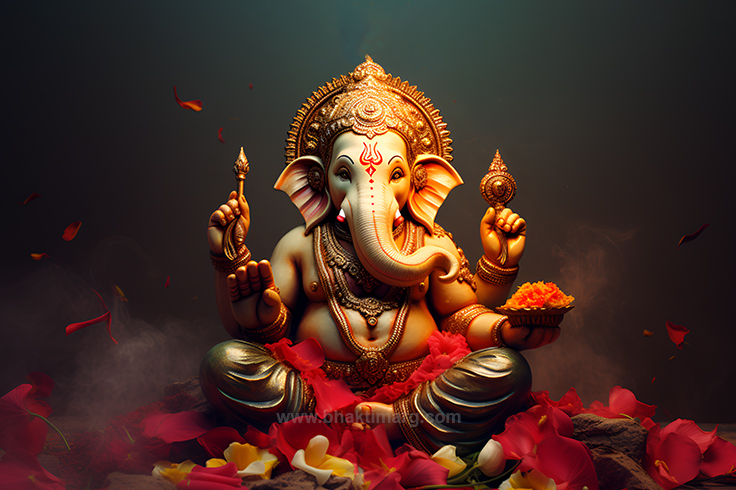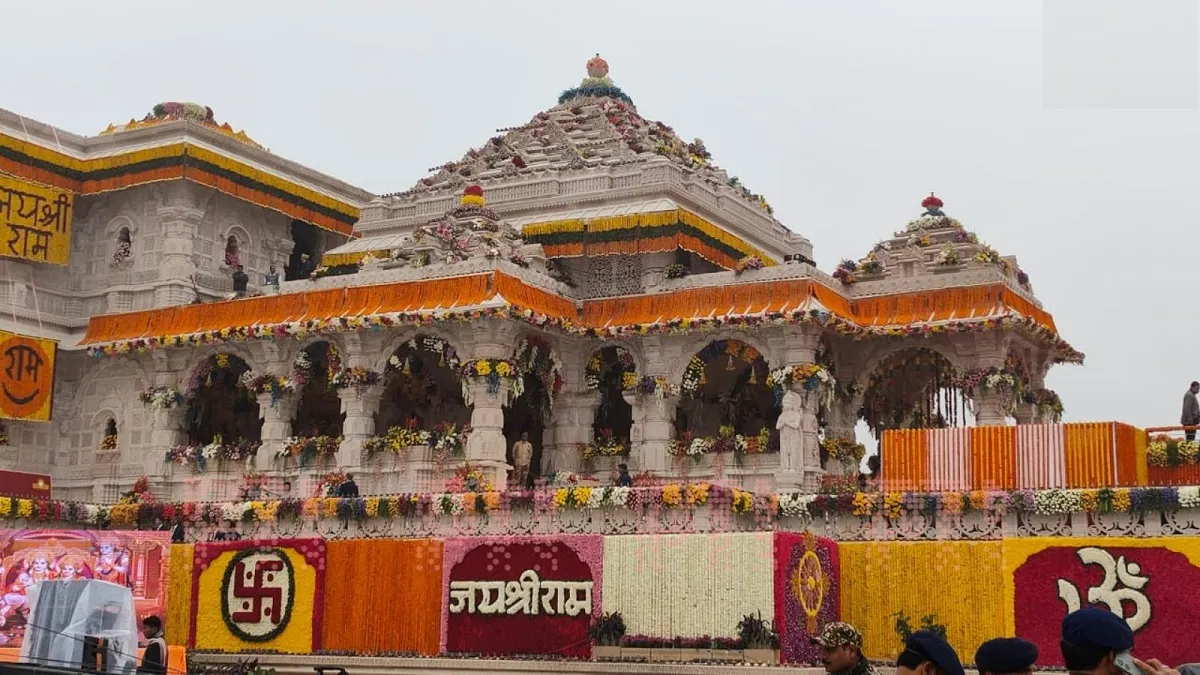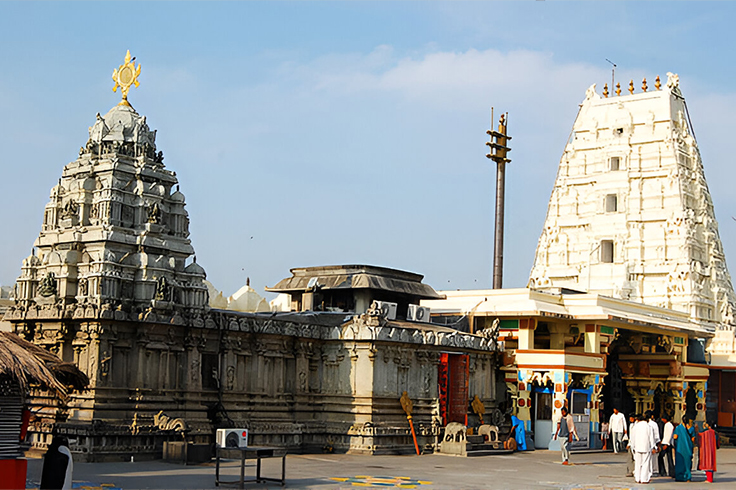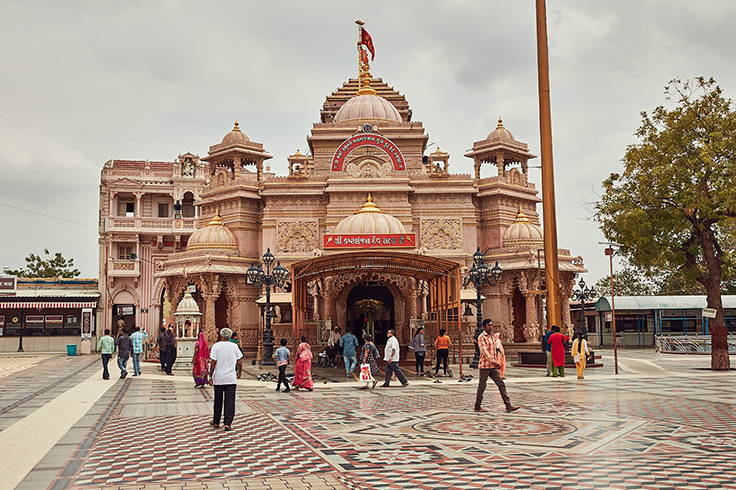
Lord Shiva
Bhakti Marg the concept itself seems incomplete without Lord Shiva, he is the epitome that established the path of devotion, not literally but technically. He is the greatest Yogi (Adiyogi) who preaches the importance of Yoga Marg and understanding of existence. Scriptures mention Shivji as the only lord indulging in meditation and Yoga to preach to his followers the same to attain mukti, uniquely promoting life philosophy.
Shivji: The All Pervading Existence and Origin
The word Shiv in Sanskrit means the auspicious one, he is known to be the ultimate truth, ‘Anandi’ who doesn’t have an origin, and ‘Ananat’ who is never-ending. God Shiv is often described in various philosophies and religious texts as the ‘All-Pervading Existence’ and has a complex multifaceted nature that encompasses various aspects, benevolent and fearsome being some of the many.
According to Sanatana Dharma, he is one of the Lords among the Hindi Trinity. Shankar Bhagavan is the Destroyer among the Trimurti Brhama Vishnu and Mahesh. It is his responsibility to destroy all the evil and bad prevailing in the universe. He dissolves the existing and paves the way for its regeneration. In many interpretations of Hinduism, Shiv Shankara Bhagwan is considered a supreme being from which all existing emanates. He is the formless transcendent reality that underlies the material world. Lord Shiv has been mentioned as the origin sound in the universe ‘Om’, and represents the cyclical nature of the universe. The Lingam is a Phallic symbol of Shiva’s creative and generative power and is often worshipped as a symbol of his presence.
Bhagwan Shankar is mentioned in the scriptures as an ascetic who resides in the Himalayas meditating in solitude. Shivji is depicted as an existence with ash smeared on his body, a serpent around his neck, minimal clothing, a trident in his hand having Dumru attached to it, and a third eye on his forehead that is said to be appearing and disappearing according to his temperament, and ornaments of Rudraksha. The third eye of Shankar Bhagwan is said to be a symbol of knowledge and wisdom when he opens the third eye there is destruction of the source of ignorance and revelation of higher truth. In Yoga, this third eye symbolizes the attainment of the subconscious mind and whole control over one’s existence hence Shiv Shankar Bhagwan is considered ‘Sarvagya’ that is omniscient the one who knows the ultimate truth of existence and so is separated from the world even while living in the world. The overall appearance of Bhagwan Shiv portrays his detached life from the materialistic world even being involved in worldly work when and where needed. Lord Shiv is the only god to be said to live in the world on Kailash Parvat which is situated in the Himalayan ranges.
Text like Shiv Puran, Vayu Puran, Rigveda, Shakti Mahatmya, and other Smriti and Shruti mentioned Shivji living with his eternal consort Shakti who is considered his other half, along with their two sons Kartikeya and Ganpati, one daughter Ashoksundari, Gana’s, Preta’s and most loyal devotee and Bhagavan Shankara’s Vahana Nandi.
Shiv Shakti: The Epitome Of Love
Shiv and Shakti are known as the sources of the universe’s creation. Lord Shiva is the ultimate conscious and Shakti is the material energy that is united for the creation of the universe. They are called ‘Purak’ completion of each other or ‘Ardhang’ half of each other. Scriptures mention Shivji and Shakti as the divine masculine and divine feminine energies that interplay the dynamics in the creation of the universe.
The legends mention that this is the oldest and very first love story orchestrated in the universe to follow a series of events for the well-being of the world and its beings. The start is said to be with the start of the universe, when Lord Brahma wanted to create the universe he was missing the energy force the substance that would be able to hold the world together, so he praised Shiv Mahadev to obtain Mata Shakti capable of being the life source of the universe so beings can sustain. At the beginning of time, God Shiv and Goddess Shakti were the same beings. Upon Lord Brahma’s request, they separated to create the world, and Shiva lost his life and existed as only a body without soul searching for his Shakti in the universe.
So the Goddess took for in Human life to reunite with Mahadev Shankar Bhagwan. She was born Sati, the daughter of Manuputri Prasuti, and Daksha, the ‘Manas Putra’ adopted son of Bramha Dev. But he being a staunch Vishnu follower was against the ideologies of Shiva. It took a while for the ignorant human form of Shakti to acknowledge her reality and accept that she is an existence of Shiva’s being going against the teachings she received from a young age of Vaishnavism. With all the opposition from her parents, they married in a Swayamvar after a lot of struggle. Even so, with her half-acquired knowledge and self-attainment, she could not hold her powers to the fullest. In a Yagya excluding Shiva Mahadev conducted by Daksha upon hearing her beloved’s insult, she self-immolated herself leaving a distressed Shivji.
She again came again as Parvati the daughter of Himavan and Mainavati to unite with her eternal love Lord Shiv. In this life she was aware of her life goal but still had the restriction of her worldly body, hence she followed Yoga Marg to activate her Seven Chakra and Kundalini under Shankar Bhagwan’s guidance depicting the world the path of Yoga and its full potential. All these Kriya and Yoga are noted in scriptures that are extremely difficult to follow and require one to leave the material world behind. She attained the Yoga Siddhi and became capable of holding her immense power in the worldly body and they Married. This started the play of Shiv-Shakti Leela promoting values, lifestyle, ideologies, and life philosophy in the human world.
Avatars and different Names of Shankar Bhagwan:
Scriptures mention several Leela’s of Lord Shiva and with each enact, he took different Avatars and depicted values for beings to live by while destroying the evil. The Mahadev ke 108 naam is mentioned in the Shivala Stotram, even so, the avatars he took are not numbered properly some Shiv Purana mentions 19 avatars of Shivji, while in Kurma Puran there are 28 avatars. Lord Shiv’s avatars are further bifurcated according to avatars nature, the 11 Rudra Avatar, 12 Jyotirlinga Avatar, 8 Asthamurti Avatar, 10 Mhavidhya Avatar,
- Shankara the word in Sanskrit means beneficient or giver of bliss, hence the lord Shiv is considered the most giving lord of all and is called Bholenath. One who can be pleased easily and is Bhola innocent in front of his devotees
- One of his renowned avatars is Hanuman ji, his 11th avatar that he took to devote himself to his favorite Shri Raam. This avatar is one of the seven ‘Cheeranjivi’ meaning who has no death and would live forever
- Shiv Shankar Bhagavan in Hinduism is said to be the originator of the first sound in the universe OM hence called Pranava. He said to the creator of all kinds of arts, including music and dance, prominently his cosmic dance represents the cycle of creation, preservation, and destruction pertaining him the title ‘Nataraj’
- Lord Shiv is considered the ultimate truth and first god hence the master of all gods, gaining him names like Paramishwar, Mahadev, Sarveshwar, Suresh, and Sanatana. Shiv Puran mentions Shiva as the unborn, eternal god Sadashiv hence he is the one not created nor can be destroyed just a true pure existence with ultimate powers
- Shankara’s forever abode is Kailash, hence he is called Kailashpati, he lives along with Bhoot, Gan, Nanadi his mount, and Pret for him all are equal, so he is called Bhootnath, and Pashupati. Since he has a third eye he is called Trilochana
Shankar Bhagwan Devotion
Shiv Shankar Bhagwan is the principal deity in the Hindu pantheon. It is regarded as the god of destruction yet when talking of devotion to Lord Shiv it is multifaceted just as his existence. The people who worship Shiva as the sole existing and supreme god are known as Shaivaits, further divided into many sects. Among these Shaiva Siddhanta, Yoga, and Kasmiri Shaivisim are largely followed. The following of Shiva tradition and devotion can be traced back to Rigveda, and the Indus Valley civilization where the Pashupati seal was found.
To date the methods of praising Lord Shiv Shankar Bhagwan are varied from Satvik to Tantrik and Yogic all are followed according to a person’s choice. God Shiv is praised in both formless and formed existence according to his devotee’s perception of him. The very general practice conducted throughout Hinduism is doing pooja of Shiva in Lingam form, and some praise the idol form of Shiva sitting on a stone in Yogic pose, wearing tiger skin, snake around his neck, and moon on the head with a trident by his side.
Regular worship is done through rituals offering flowers, water, and milk on the idol or lingam of Shankar Bhagwan, people observe fast on specific days such as on Monday or during Sharvan, and visit temples to offer prayer. On the occasion of Mahashivratri the ardent followers visit temples and sing Shiv Ji Ke Bhajan. The most famous traditional compositions worshippers follow are Shiv tandav Stotra, Shiv Stuti, Shivji Ka Maha Mrityunjaya Mantra, and Shiv Astakam. One can even find various songs of Shiv Shankar Bhagwan woven in melodies and enchanting lyrics by many artists online to immerse themselves in the devotion of the lord.
There are pilgrimage journeys embarked to places like Kedarnath, Badrinath, Amarnath, and Varanasi (Kashi) named the beloved place of Shiva. Another form of devotion to Lord Shiv is meditation following asceticism from mild to rigorous as per the worshipper’s belief. Shivji is the lord of different art forms hence many even praise him through their art specifically song and dance. It is believed that praising the all-pervading lord Shiv would help attain spiritual awakening and liberation (moksha).
With all said to rouse Lord Shiv’s grace the simplest form of worship would suffice, he would never differentiate among his devotees based on any kind of distinction and hence is also called Bhole Baba or Bholenath by his devotees.
Shiva a Philosophy
Lord Shiva’s significance in Hinduism is multifaceted, embodying both the destructive and benevolent aspects of existence. He represents the cyclical nature of the universe, the pursuit of spiritual enlightenment, and the ultimate transcendence of material limitations. As the “All-Pervading Existence,” Shiva’s essence permeates all aspects of life and existence in Hindu philosophy.
- He is known as the Destroyer in a wider sense his worship destroys negativity, bad karma, evil, and any form of bad prevailing to preserve and regenerate the new and good. Shiv Shankar Bhagwan signifies auspiciousness and a benevolent nature creating new possibilities and promoting that nothing is permanent things will change and they should for the better emerge from existing old and evil.
- Lord Shiva is called Mahayogi depicted as a great ascetic progressing detachment and inner focus emphasizing the importance of contemplation and self-realization.
- Being an ascetic Shiv Mahadev is also celebrated as a householder marrying his divine counterpart Goddes Parvati. This preaches that one can practice Yoga and attain moksha along with living a homely life, he lived in seclusion following married life.
- Shankar Bhagwan is the epitome of promoting the 4 ashrams of life in Sanatan Dharma Bhramacharya, Grihastha, Vanaprastha, and Sanyasa.
- Shiva loves his counterpart Goddes Shakti even taking the half-male and half-female form with her known as the Ardhanarishwara. This promotes a deep-level philosophy of masculine and feminine energy, the yin and yang signifying the interconnectedness and balance of the opposite in the cosmic order.
- Lord Shiva Mahadev is praised as lingam that formless idol or rather representation of the whole universe. The linga Purana presents that the lingam or shiv lord is signless, without color, taste, or smell, that is beyond word or touch, without quality motionless and changeless, and all the universe is manifested in this Linga. It signifies the union of unchanging principles and ever-changing nature
- Lord Shivji promotes overcoming fear of death hence staying in the funeral ground, covering himself with the ashes, living with gan-pret (the dead souls) of the dead accepting death and the reality of life. Shankar Bhagwan values the dead as much as the living beings without differentiating among anyone hence he is also called Pashupati stating that even animal existence is as important as human life
Overall Shiva, Mahadev, Shankar, Bholenath, is true to his name having multiple natures from serene to aggressive being giving to destroyer his existence is multifaceted and deeply layered promoting life comprehensively.




